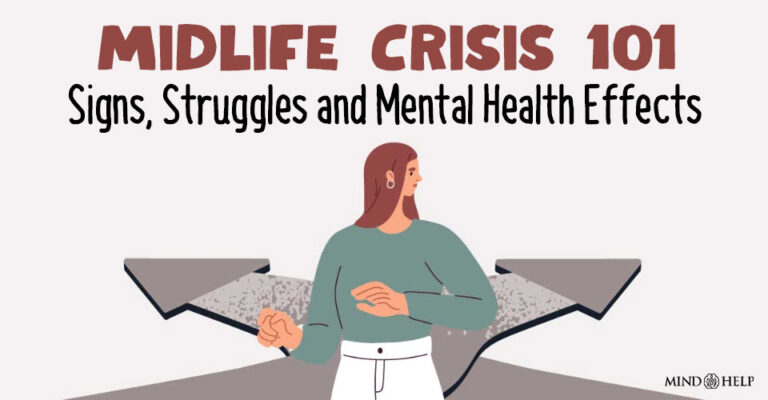Self-serving bias refers to the cognitive bias where individuals tend to attribute their positive outcomes to internal factors such as their abilities or efforts, while attributing negative outcomes to external factors like luck or circumstances. This bias serves as a self-protective mechanism to maintain self-esteem and has implications for mental health functioning and overall well-being.
What is The Self-Serving Bias?
Self-serving bias is a cognitive tendency 1 Duval, T. S., & Silvia, P. J. (2002). Self-awareness, probability of improvement, and the self-serving bias. Journal of personality and social psychology, 82(1), 49–61. https://doi.org/10.1037//0022-3514.82.1.49 ingrained in human behavior where we attribute our successes to internal, personal factors while assigning blame for our failures to external, situational factors.
The influence of self-serving bias extends to various domains, including job performance, sports, and even our assessment of driving ability, shaping how we explain our behaviors in these contexts.
In the 1960s, Fritz Heider 2 Larson, J. R. (1977). Evidence for a self-serving bias in the attribution of causality1. Journal of Personality, 45(3), 430–441. https://doi.org/10.1111/j.1467-6494.1977.tb00162.x , an Austrian psychologist, made a significant observation about human behavior, identifying a phenomenon known as self-serving bias.
He discovered that when faced with ambiguous situations, individuals tend to attribute outcomes in a way that boosts their self-esteem. Unfortunately, this bias hampers our ability to learn from mistakes, distorts our self-perception, and greatly limits our capacity to reflect on negative outcomes.
Read More About Self-Esteem Here
Why Do People Engage in Self-Serving Bias?
Some key factors that contribute to 3 Shepperd, J., Malone, W., & Sweeny, K. (2008). Exploring Causes of the Self-serving Bias. Social and Personality Psychology Compass, 2(2), 895–908. https://doi.org/10.1111/j.1751-9004.2008.00078.x the occurrence of self-serving bias are:
1. Self-enhancement
Self-enhancement is rooted in the fundamental human need to preserve and bolster one’s self-worth. This cognitive bias serves as a protective mechanism, allowing individuals to maintain a positive self-image and uphold their sense of self-worth.
2. Self-presentation
It encompasses the aspiration to project a specific image to external observers. In this regard, self-serving bias plays a crucial role by enabling us to uphold and manage the image we present to others, as it allows us to attribute positive outcomes to ourselves while attributing negative outcomes to external factors.
3. Age and Gender
When examining self-serving bias, research suggests 4 Ostafichuk, P. M., Mattucci, S., D’Entremont, A., Shirzad, N., & Naylor, C. (2015). SELF-PERCEPTION DIFFERENCES BASED ON GENDER AND PERSONALITY TYPE IN TEAM PROJECTS. Proceedings of the Canadian Engineering Education Association. https://doi.org/10.24908/pceea.v0i0.5784 that especially the age group of older adults exhibits a tendency to attribute their successes to internal factors, taking credit for their accomplishments.
On the other hand, men in comparison to women tend to lean towards external attributions, attributing their failures to outside forces or circumstances rather than women.
Read More About Gender Here
4. Cultural Influence
Cultural influences play a significant role in the prevalence and acceptance of self-serving bias. In cultures that emphasize personal achievements and self-promotion, known as individualistic cultures 5 Grossmann, I., & Santos, H. C. (2016). Individualistic Cultures. Encyclopedia of Personality and Individual Differences, 1–4. https://doi.org/10.1007/978-3-319-28099-8_2024-1 , self-serving bias is more likely to be widespread and considered socially acceptable.
5. Motivational Factor
Motivation plays a significant role in self-serving bias. The desire to protect one’s ego, and seek validation for one’s abilities and achievements serves as a powerful motivational factor.
Effects of Self-Serving Bias on Mental Health
The effects of self-serving bias on mental health 6 Wang, X., Zheng, L., Li, L., Zheng, Y., Sun, P., Zhou, F. A., & Guo, X. (2017). Immune to Situation: The Self-Serving Bias in Unambiguous Contexts. Frontiers in psychology, 8, 822. https://doi.org/10.3389/fpsyg.2017.00822 can have the following implications:
- Excessive self-serving bias strains relationships by fostering blame, reducing communication, and impeding the ability to take responsibility for one’s actions.
- Self-serving bias makes it challenging to learn from mistakes or feedback, hindering personal growth and development.
- By fostering a fear of being blamed for others’ outcomes, self-serving bias reduces individual effort, potentially leading to decreased performance.
- An overemphasis on external factors due to self-serving bias creates worry and fear of negative outcomes, contributing to symptoms associated with anxiety disorders.
- Self-serving bias can contribute to the development of narcissistic traits, such as an inflated sense of self-importance and a constant need for admiration from others.
How to Avoid Self-Serving Bias
Here are some tips 7 Wang, X., Zheng, L., Li, L., Zheng, Y., Sun, P., Zhou, F. A., & Guo, X. (2017). Immune to Situation: The Self-Serving Bias in Unambiguous Contexts. Frontiers in psychology, 8, 822. https://doi.org/10.3389/fpsyg.2017.00822 to overcome self-serving bias:
- Practice self-awareness related to your thoughts, actions, and attributions, and strive to recognize the situation when you might be engaging in self-serving bias.
- Actively seek feedback from others and genuinely listen to their perspectives, even if it challenges your own self-perceptions.
- Put yourself in others’ shoes and try to understand their perspectives and experiences, recognizing the influence of situational factors on their actions.
- Acknowledge and take responsibility for your own mistakes or shortcomings, and be willing to learn and grow from them.
- Promote open and honest communication within relationships and groups, where individuals feel comfortable acknowledging their own contributions to outcomes.
- Engage in mindfulness activities like breathing exercises, meditation, and yoga for building alertness.
- Keep a journal to track your responses in various situations, that would help you identify patterns in your behavior and uncover any biases or self-serving tendencies.
Frequently Asked Questions (FAQs)
1. When a self-serving bias is a symptom?
When self-serving bias becomes pervasive and significantly distorts an individual’s perception of reality and interactions with others, it can be considered a symptom of underlying psychological or personality disorders.
2. What is the difference between self-serving bias and fundamental attribution error?
Self-serving bias is when we attribute our successes to ourselves and blame outside factors for our failures, while the fundamental attribution error is when we assume someone’s actions are solely due to their personality and overlook the impact of the situation they are in.
3. Is self-serving bias always conscious, or can it operate unconsciously?
Self-serving bias can operate both consciously and unconsciously, as it can be influenced by cognitive processes and ingrained patterns of thinking that individuals may not be fully aware of.















